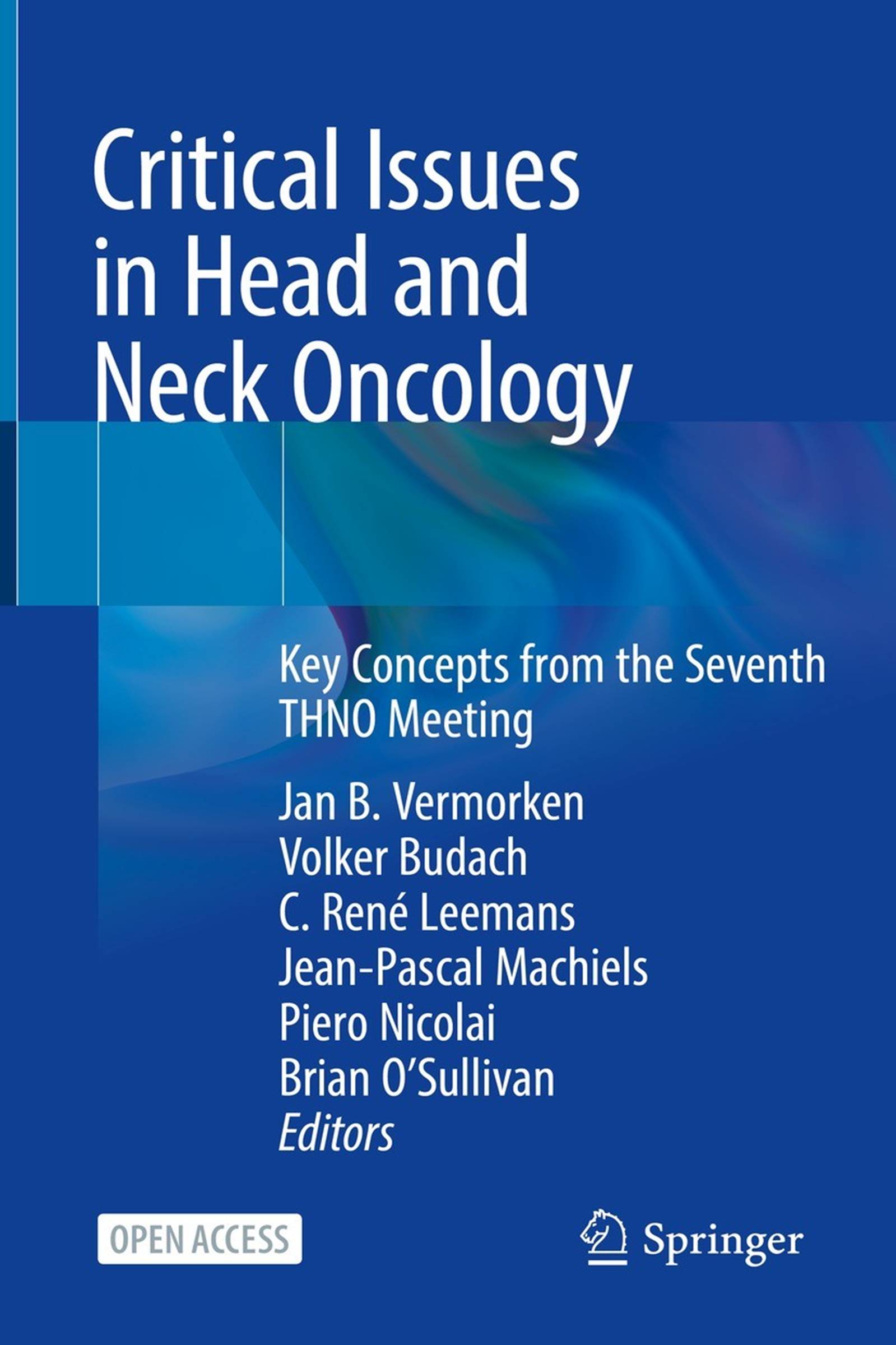Review by PJ Bradley
Nottingham, UK
This publication is a selection of lectures presented at the 7th Meeting of Trends in Head and Neck Oncology (THNO-7) which took place in Athens, Greece in November 2019, organised by the same coordinating team (Editors) as that of the 5th and 6th meeting (previously published by Springer). It was supported by Pharma, with endorsement from the European Head and Neck Society (EHNS) and the European Organisation for Research and Treatment of Cancer (EORTC). The aim of these meetings has been to present the most up-to-date information on head and neck cancer, by recognized experts, guaranteeing that shortly afterwards the proceedings will be published. On this occasion this happened within 8 months, but this reviewer was unaware of its publication.
The themes of this Volume in six sections are: Biomarkers in Head and Neck Squamous Cell carcinoma (6 Chapters); Primary Disease (15 Chapters); Recurrent and/or Metastatic Disease (4 Chapter); Rare Head and Neck Cancers (1 Chapter); Nasopharyngeal Cancer (3 Chapters); and a Keynote Lecture on Innovation and Advances in Precision Medicine in Head and Neck Cancer. Each chapter is enhanced with coloured figures and diagrams and liberally supported by published references (up to 2020).
As a surgical oncologist reviewer, there was an abundance of information on the non-surgical management of primary and recurrent / metastatic squamous cell carcinoma. This included the current role of biomarkers in early disease diagnosis, biomarkers for hypoxic HPV status and proliferation, Imaging Perspective and biomarkers for immune modulatory treatment. There were chapters on the state and role of chemotherapy and immunotherapy and their position in the treatment schedule such as induction therapy, high dose/low dose chemo-radiotherapy, and the role of neoadjuvant targeted therapy and immunotherapy, as well as a chapter on new and promising targeted therapies, in first and second-line settings. Considered appropriate was a chapter on “Optimal Supportive Measures during Primary Treatment”. A separate section on nasopharyngeal cancer covered epidemiology aspects, new developments in current management and new drugs for recurrent / metastatic disease.
The chapters that I found enlightening were the assessment of the surgical margins, surgical approach to the elderly patients, salvage surgery, and the chapter on “Re-irradiation for local relapses or second primaries: when and how?” There was a short chapter on rare head and neck cancers – defined as < 6 per 100,000 inhabitants (incidence) per year – this would include for the European population most of the head and neck sub-sites! The final chapter on “Innovation and Advances in Precision Medicine” gave an insight into current and possible improvements in the therapeutic options for recurrent / metastatic head and neck cancer. The aim of treatment being targeted at the tumours molecular pathogenesis, results in tailoring a specific treatment for a specific patient, with improved outcomes. The challenges so far encountered include the diversity of genetic aberrations, the heterogeneous mutational spectrum, and the lack of actionability of the majority of genomic-based alterations observed. The identification of biomarkers and their inclusion into clinical trials may help identify selected patients that are more likely to respond to specific therapies. The continued recognition of the complexity and molecular diversity of head and neck squamous cell carcinoma has resulted in the development and expansion of the ”omics” technologies – epigenomics, transcriptomics, proteomics, metabolomics and shotgun metagenomics. While each single level omics approach has shed some light on epigenetic alterations their activity has been limited, the combining of these findings into “multi-omics” approaches may enhance additional predictive and prognostic value. This research avenue requires dedication and sustained scientific collaboration to realise and achieve this goal of precision medicine for the treatment of patients with head and neck squamous carcinoma.
This publication is recommended to all clinicians involved in patient management with head and neck cancer as a “source of knowledge” on the modern and future treatment options of this disease. This volume can be downloaded from Springer Nature or from the web for FREE on the Open Publication URI https://library.oapen.org/handle/20.500.12657/49504
This reviewer purchased his paper edition (as he had already purchased the other volumes). The e-book Open Access is more than satisfactory for short study periods, rather than to be considered a textbook. A suggestion and comment to the Publishers is that all of the chapters, for consistency, should use the American Psychological Association (APA) reference style, to include the DOI (Digital Objective Identifier) or the URL (reference location on the internet).
Amazon Link: Critical Issues in Head and Neck Oncology
By purchasing books via this link you will help to fund the JLO

